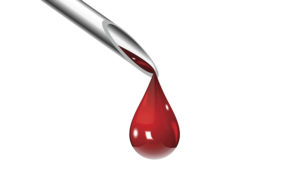Editor’s note: The following is part one of a two-part series.

RDH, BS, M.Ed, PhD
By Katherine Schrubbe, RDH, BS, M.Ed, PhD
Compliance is defined as the act or process of doing what you have been asked or ordered to do: the act or process of complying.1 Your dental customers may not like the word, but in dentistry, compliance to standards, guidelines and best practices forms the basis for maintaining personnel health, reducing the risk of disease transmission and providing safe, high-quality care to patients.
In 1970, when the Occupational Safety and Health Act was established, Congress created the Occupational Safety and Health Administration (OSHA). OHSA’s mission has been to ensure safe and healthful working conditions for working men and women by setting and enforcing standards and by providing training, outreach, education and assistance. OSHA is part of the U.S. Department of Labor; hence, the OSH Act is a federal law.2
In the almost five decades since the OSH Act was signed into law, workplace deaths and reported occupational injuries have dropped by more than 60 percent. Yet, the nation’s workers continue to face an unacceptable number of work-related deaths, injuries and illnesses – most of them preventable.3
 OSHA published the final Bloodborne Pathogens Standard (BBP) in 1991 in response to the significant health risk associated with occupational exposure to blood and other potentially infectious materials. At the time, nearly six million workers in healthcare and related occupations faced exposure to bloodborne diseases. The standard applies to employees who have occupational exposure to the hazard, the presence of blood or other potentially infectious materials, regardless of whether a needlestick injury has occurred at the worksite.4 The Standard – also known as Title 29, Code of Federal Regulations 29 CFR 1910.1030, – includes a list of provisions.
OSHA published the final Bloodborne Pathogens Standard (BBP) in 1991 in response to the significant health risk associated with occupational exposure to blood and other potentially infectious materials. At the time, nearly six million workers in healthcare and related occupations faced exposure to bloodborne diseases. The standard applies to employees who have occupational exposure to the hazard, the presence of blood or other potentially infectious materials, regardless of whether a needlestick injury has occurred at the worksite.4 The Standard – also known as Title 29, Code of Federal Regulations 29 CFR 1910.1030, – includes a list of provisions.
Equally important is The Needlestick Safety and Prevention Act (NSPA), which was signed into law in November 2000. It requires employers to evaluate, select and use engineering controls (e.g., sharps with engineered sharps injury protections or needleless systems) to eliminate or minimize exposure to contaminated sharps.5
In the daily hustle and bustle of the dental practice, the provisions of the BBP Standard may be disregarded or discounted. Still, it’s essential that dental owners and staff be aware of the more important measures to be taken, including ensuring a safe workplace for the dental team. In fact, dentists should ensure their entire staff understands the importance of these measures, and training should take place annually.
The BBP Standard includes a number of provisions, including:
- Employers must establish an Exposure Control Plan (ECP), which must be updated annually and accessible to all employees.6,7 The employer must perform an exposure determination of all staff to determine risk of exposure to BBP.
- A job classification, including a list of tasks performed by staff that result in their exposure.6,7 (OSHA offers a template on its web page for practices that need to develop a new ECP or update their current one. https://www.osha.gov/OshDoc/Directive_pdf/CPL_2-2_69_APPD.pdf that can assist.)
- Universal precautions– that is, the treatment of all human blood and certain human body fluids as if they were known to be infectious for HIV, HBV and other bloodborne pathogens – must be observed to prevent contact with blood or other potentially infectious materials. Under circumstances in which differentiation between body fluid types is difficult or impossible, all body fluids should be considered potentially infectious materials.6 (This is an important, as all patients – regardless of medical history – can be infectious.)
Additionally, The Standard discusses the use of engineering controls and safe work practices. These are two different things: Engineering controls are devices that have been manufactured to help reduce injuries related to sheathing needles and sharps containers. Work practice controls are process practices, such as passing instruments with the sharp end away from the other person and ensuring there are safe practices for disposing of sharps.7 Even experienced providers can have a sharps injury, so incorporating these practices are important for reducing this risk.
The BBP Standard also addresses personal protective equipment protocols. According to the Standard, when there is occupational exposure, the employer shall provide, at no cost to the employee, appropriate personal protective equipment such as, but not limited to, gloves, gowns, laboratory coats, face shields or masks and eye protection, mouthpieces, resuscitation bags, pocket masks and other ventilation devices. Personal protective equipment will be considered appropriate only if it does not permit blood or other potentially infectious materials to pass through – or to reach – the employee’s work clothes, street clothes, undergarments, skin, eyes, mouth or other mucous membranes under normal conditions of use and for the duration of time which the protective equipment will be used.6 There are many options on the market for PPE to accommodate all staff preferences, so there is no reason for non-compliance.
This represents only part of the BBP Standard, but it’s a good place to start if a review is needed in the practice. Remember, OSHA has been put in place to protect the worker, regardless of job type. Healthcare, including dentistry, has its unique hazards, and OSHA has provided sound standards to ensure a safe dental setting workplace.
References
- Meriam Webster. Available at http://www.merriam-webster.com/dictionary/compliance. Accessed November 16, 2016.
- United States Department of Labor. Occupational Safety and Health Administration. https://www.osha.gov/about.html. Accessed November 16, 2016.
- United States Department of Labor. Occupational Safety and Health Administration. https://www.osha.gov/dsg/InjuryIllnessPreventionProgramsWhitePaper.html. Accessed November 17, 2016.
- United States Department of Labor. Occupational Safety and Health Administration. https://www.osha.gov/pls/oshaweb/owadisp.show_document?p_table=TESTIMONIES&p_id=164. Accessed November 21, 2016.
- United States Department of Labor. Occupational Safety and Health Administration. https://www.osha.gov/pls/oshaweb/owadisp.show_document?p_table=INTERPRETATIONS&p_id=24917. Accessed November 21, 2016.
- United States Department of Labor. Occupational Safety and Health Administration. https://www.osha.gov/pls/oshaweb/owadisp.show_document?p_table=STANDARDS&p_id=10051. Accessed November 21, 2016.
- United States Department of Labor. Occupational Safety and Health Administration. https://www.osha.gov/OshDoc/data_BloodborneFacts/bbfact01.pdf. Accessed November 21, 2016.
Editor’s Note: Katherine Schrubbe, RDH, BS, M.Ed, PhD, is director of quality assurance at Milwaukee, Wisc.-based Dental Associates.The Bloodborne Pathogens Standard: Compliance is important!

